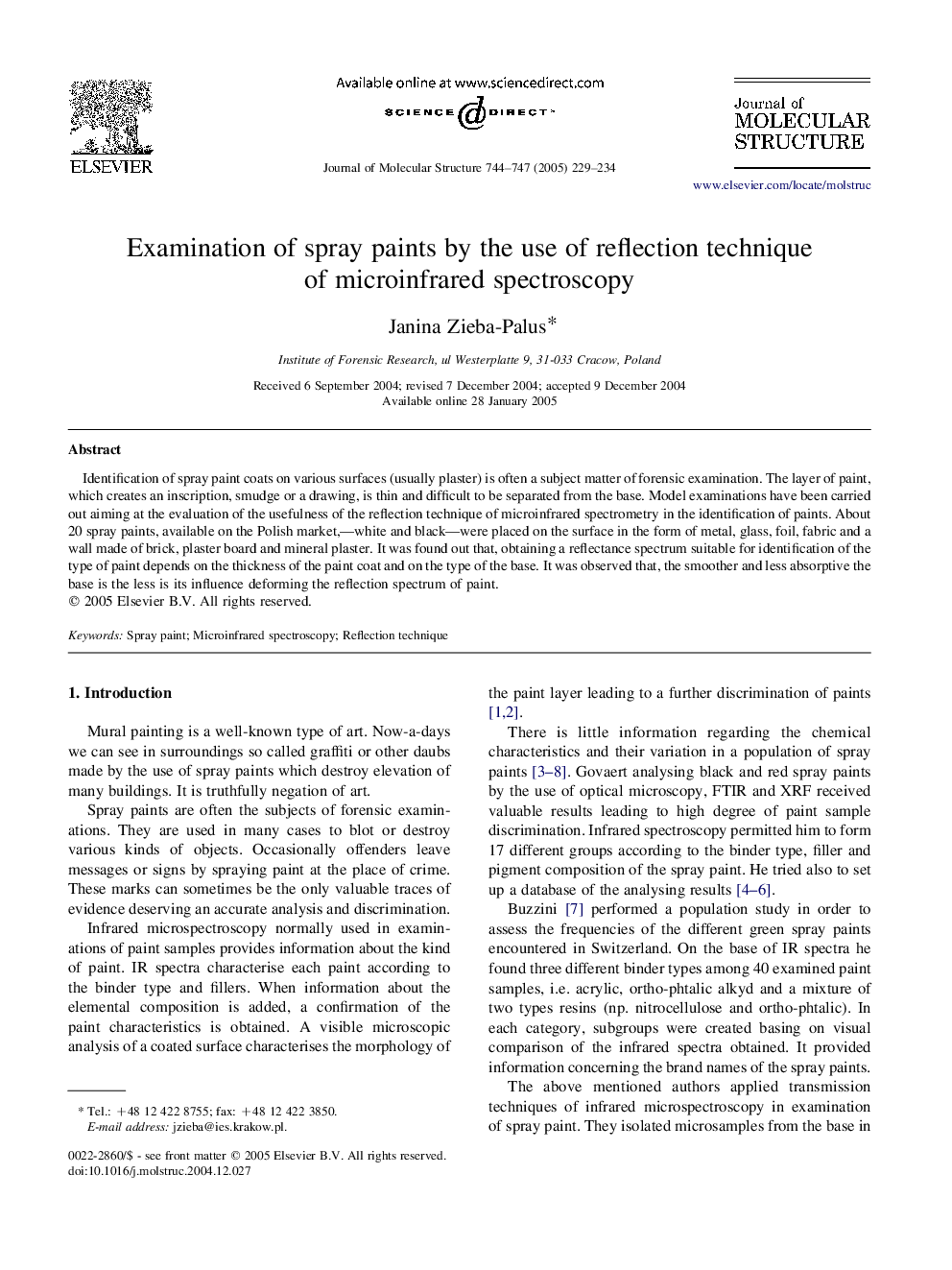| Article ID | Journal | Published Year | Pages | File Type |
|---|---|---|---|---|
| 9770062 | Journal of Molecular Structure | 2005 | 6 Pages |
Abstract
Identification of spray paint coats on various surfaces (usually plaster) is often a subject matter of forensic examination. The layer of paint, which creates an inscription, smudge or a drawing, is thin and difficult to be separated from the base. Model examinations have been carried out aiming at the evaluation of the usefulness of the reflection technique of microinfrared spectrometry in the identification of paints. About 20 spray paints, available on the Polish market,-white and black-were placed on the surface in the form of metal, glass, foil, fabric and a wall made of brick, plaster board and mineral plaster. It was found out that, obtaining a reflectance spectrum suitable for identification of the type of paint depends on the thickness of the paint coat and on the type of the base. It was observed that, the smoother and less absorptive the base is the less is its influence deforming the reflection spectrum of paint.
Keywords
Related Topics
Physical Sciences and Engineering
Chemistry
Organic Chemistry
Authors
Janina Zieba-Palus,
